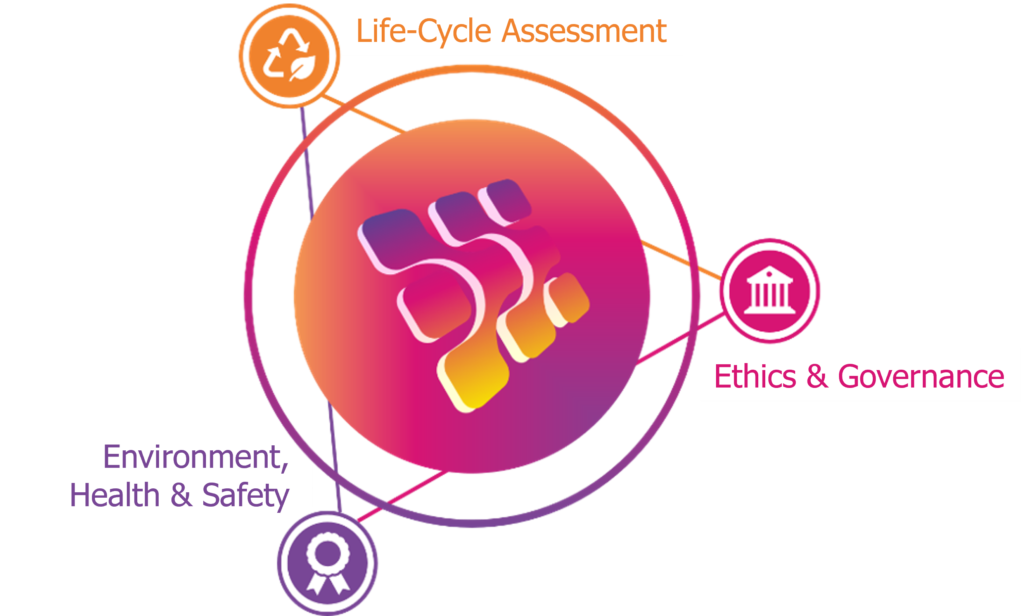The NanoFabNet, and international hub for sustainable nanofabrication, has published its ‘NanoFabNet Strategy & Implementation Roadmap for Sustainability in Nanofabrication’.

Building on the NanoFabNet ‘Report on the Concepts & Disciplines of Sustainability in Nanotechnology & Nanofabrication’ (published in October 2020), in which the NanoFabNet Concept of Sustainable Nanofabrication was introduced, and its three main working areas were identified and describes as the three main Pillars of the Concept (i.e. (a) Environment, Health & Safety issues, (b) Life Cycle Sustainability issues, and (c) Ethics & Governance issues), the Strategy provides a set of recommendations that guide both the formation of a joint, interdisciplinary expert community for sustainable nanofabrication, and the adoption of sustainability into nanofabrication processes and products in four dimensions:
The authors not that ‘[t]he different suggested actions and recommendations cannot be considered as totally independent of each other. […] This strategy and implementation roadmap thus appears as a collective task, where each category of stakeholders has both a specific and a collective role to play: interaction and engagement can be mentioned as its key messages to be retained.’

The ‘NanoFabNet Strategy & Implementation Roadmap for Sustainability in Nanofabrication’ is the third document published by the NanoFabNet, in preparation of the launch of the NanoFabNet Hub, planned for the summer of 2022; the Hub aims to provide a one-stop-shop for all matters and concerns pertaining to sustainable nanofabrication and its successful incorporation into the complex, large-scale high-value industries by bringing together governmental and academic laboratories with large industries and SMEs.
In total, the following six NanoFabNet reports will set the basis for a successful implementation of sustainable nanofabrication across all relevant sectors:
- ‘NanoFabNet Strategy & Implementation Roadmap for Sustainability in Nanofabrication’
- ‘NanoFabNet Validation, Harmonisation & Standardisation Action Plan’ (published in December 2021)
- ‘NanoFabNet Strategy & Implementation Roadmap on Infrastructures, Knowledge & Skills Development’ (to be published in March 2022)
- ‘NanoFabNet Visibility, Communication & Dissemination Strategy’ (to be published in March 2022)
- ‘NanoFabNet Strategy on EU Project Collaboration’ (published in October 2021); and
- ‘NanoFabNet Strategy on international Cooperation’ (to be published in January 2022).
Follow this link to find out more about the NanoFabNet, or to sign up to receive the newsletter or become a stakeholder.








